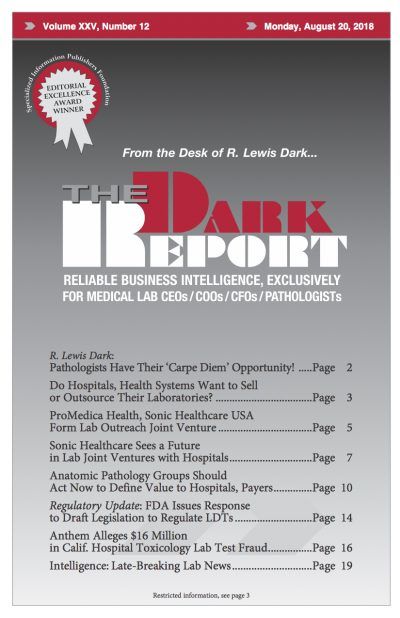CEO SUMMARY: Payers and health system administrators generally agree that healthcare is moving away from fee-for-service toward value-based payment. Because adoption of value-based contracts is slower for pathologists than for other providers, pathologists have the opportunity to define how provider systems can pay for value contributed by pathologists. However, to take advantage of this opportunity, …
Pathology Groups Should Act Now to Define Value Read More »
To access this post, you must purchase The Dark Report.


